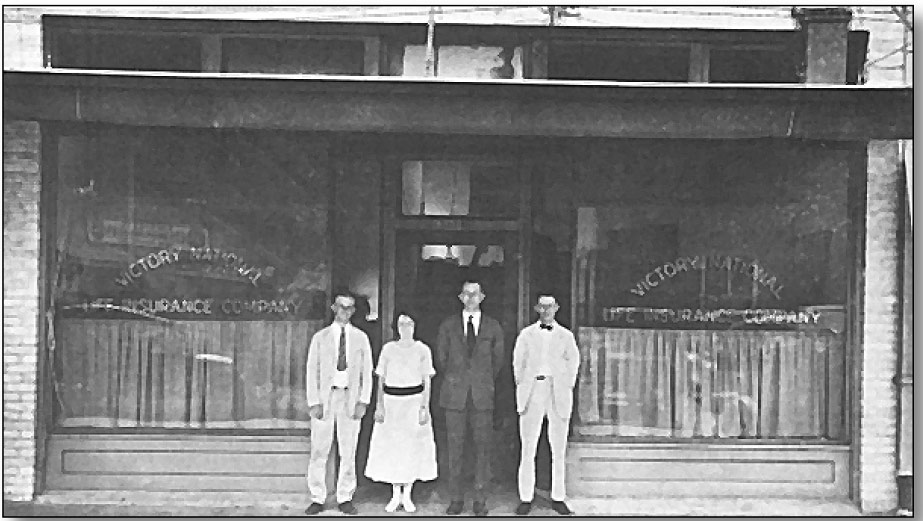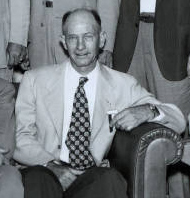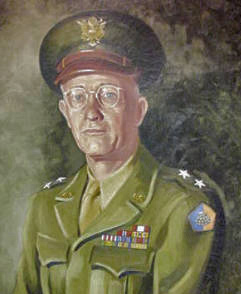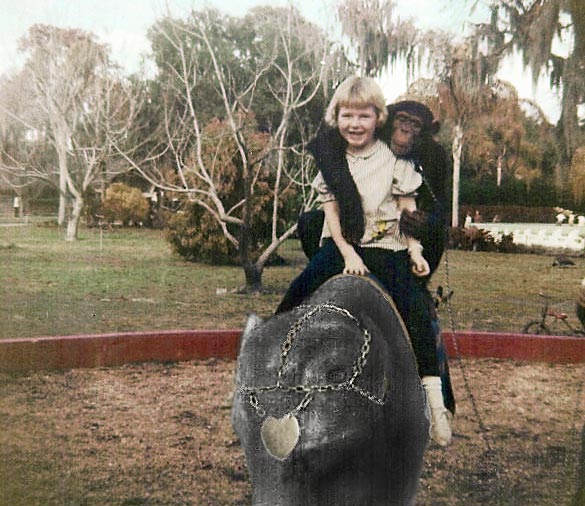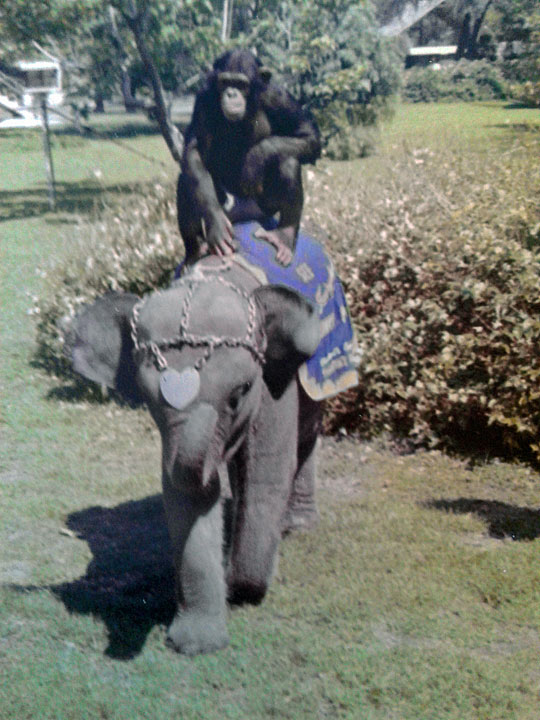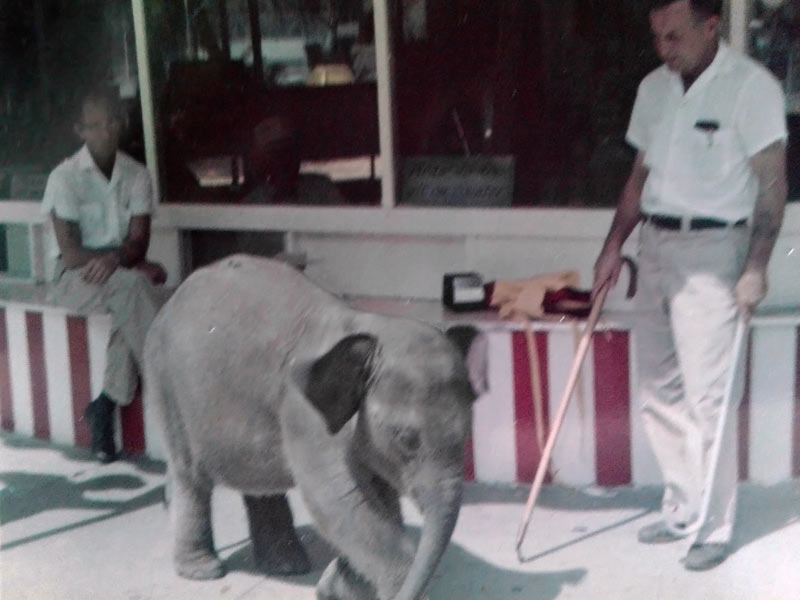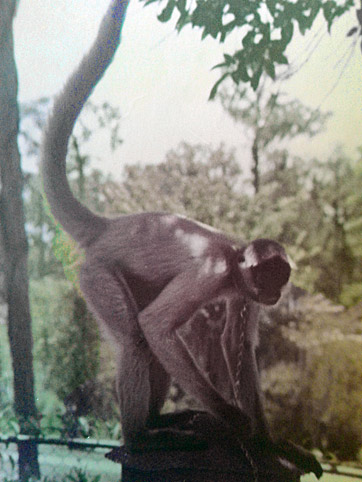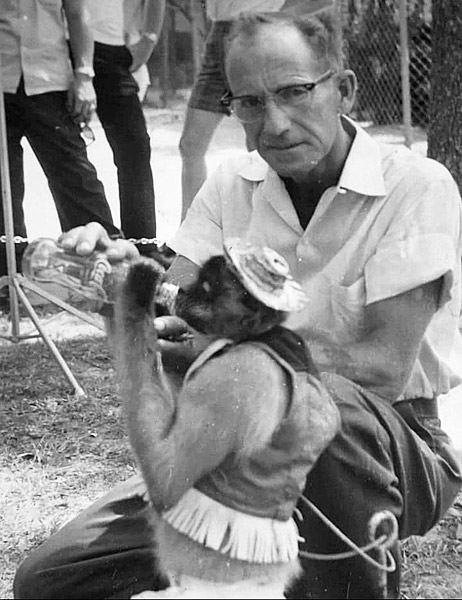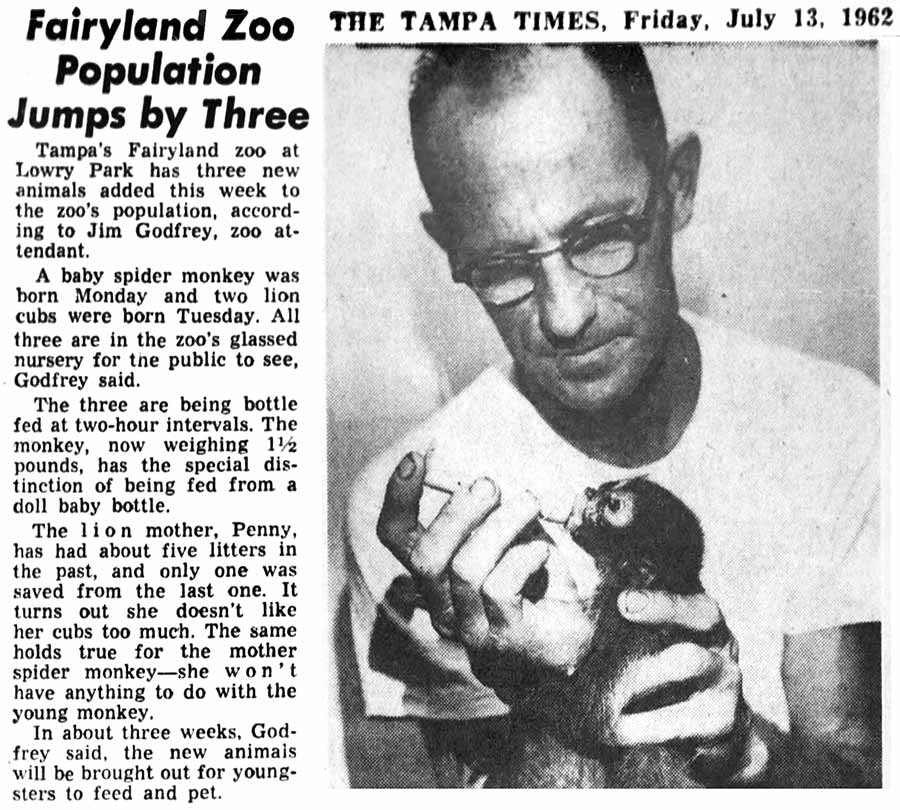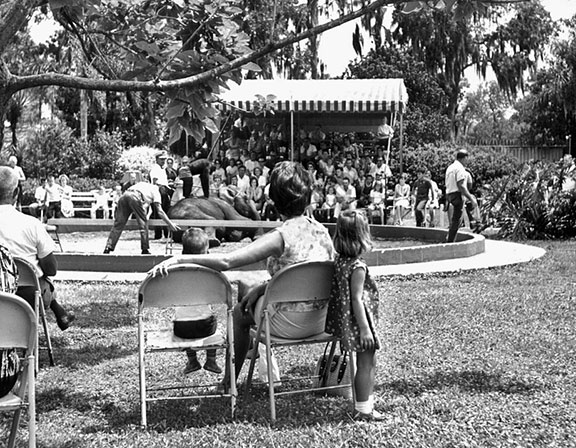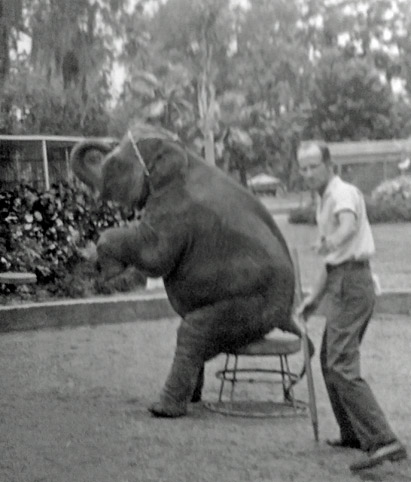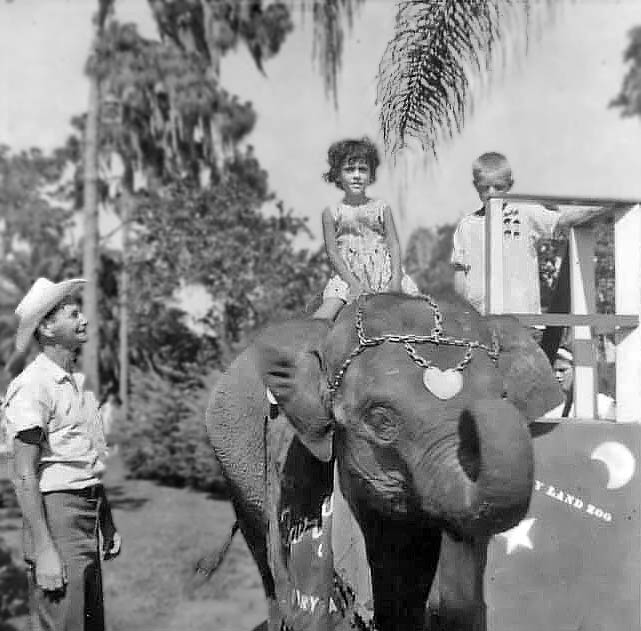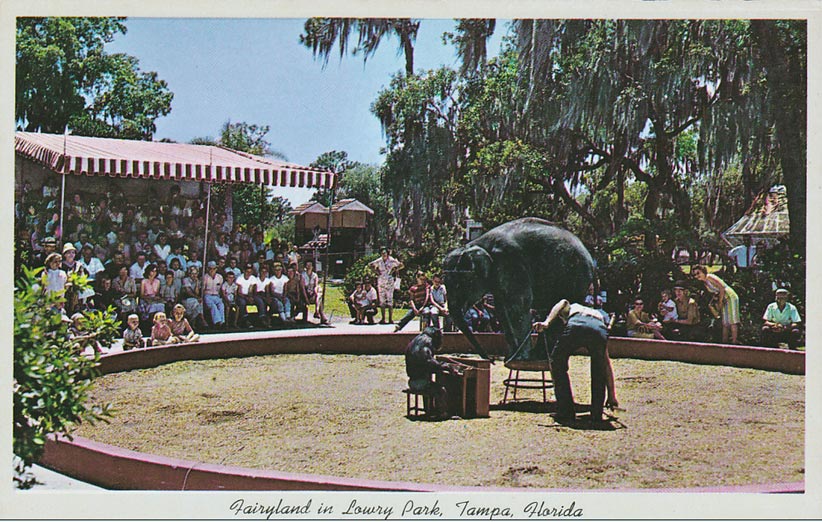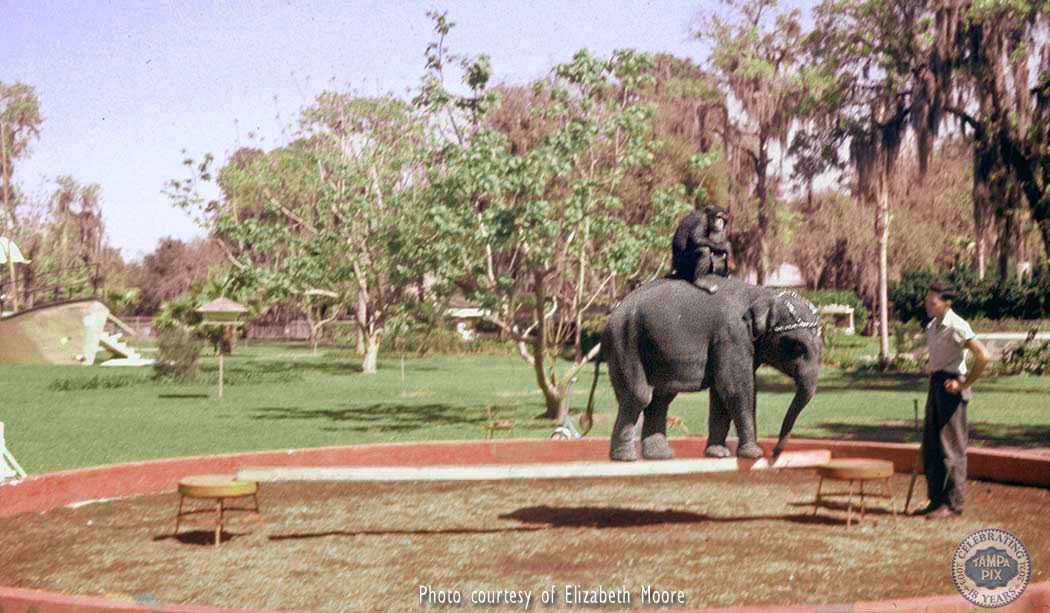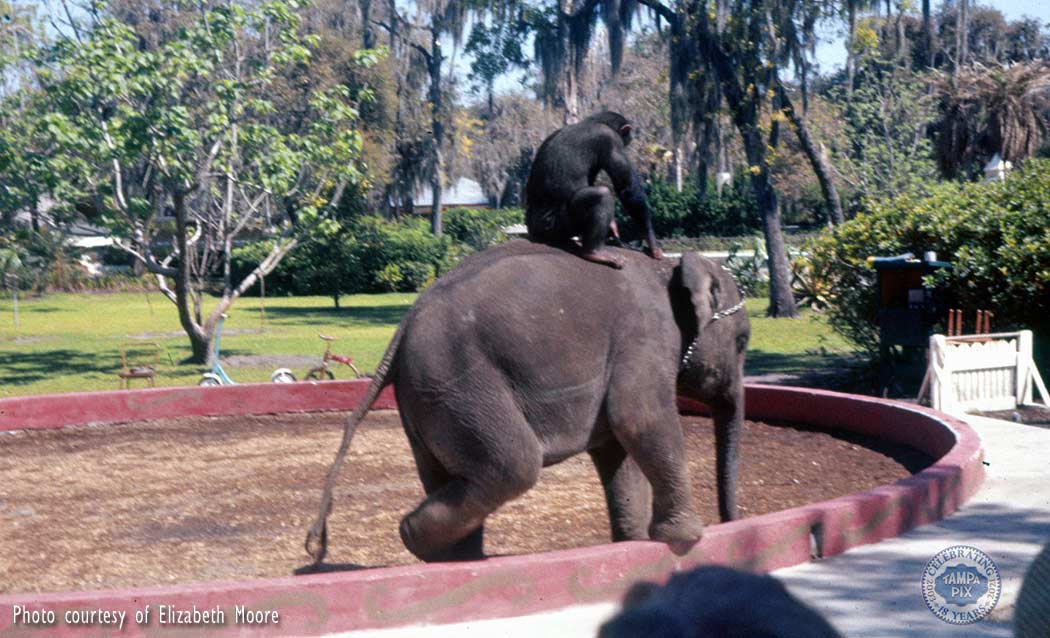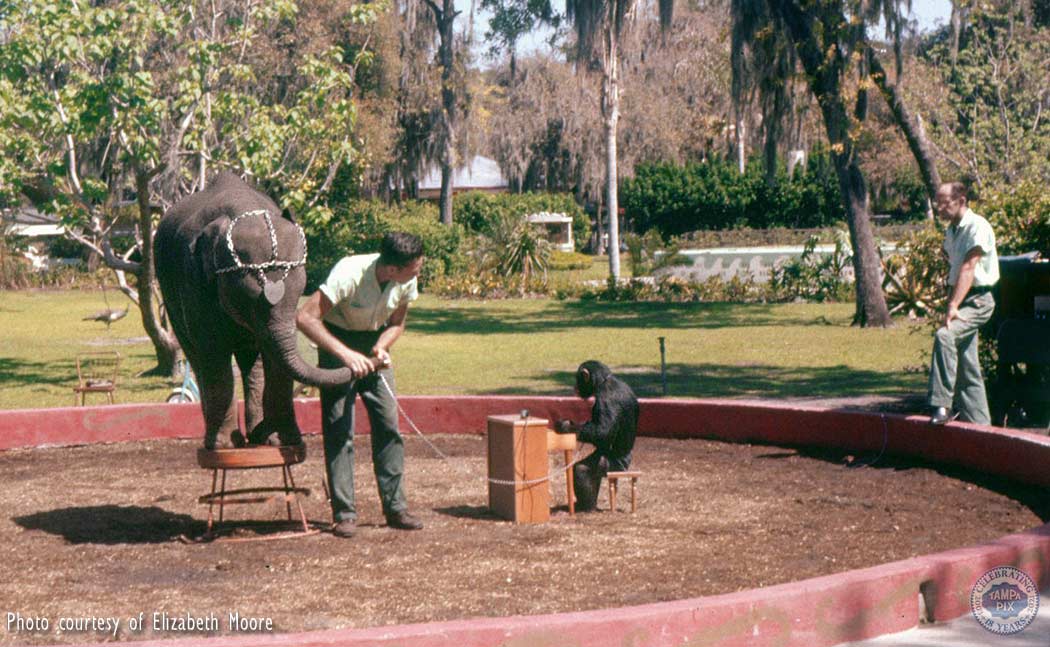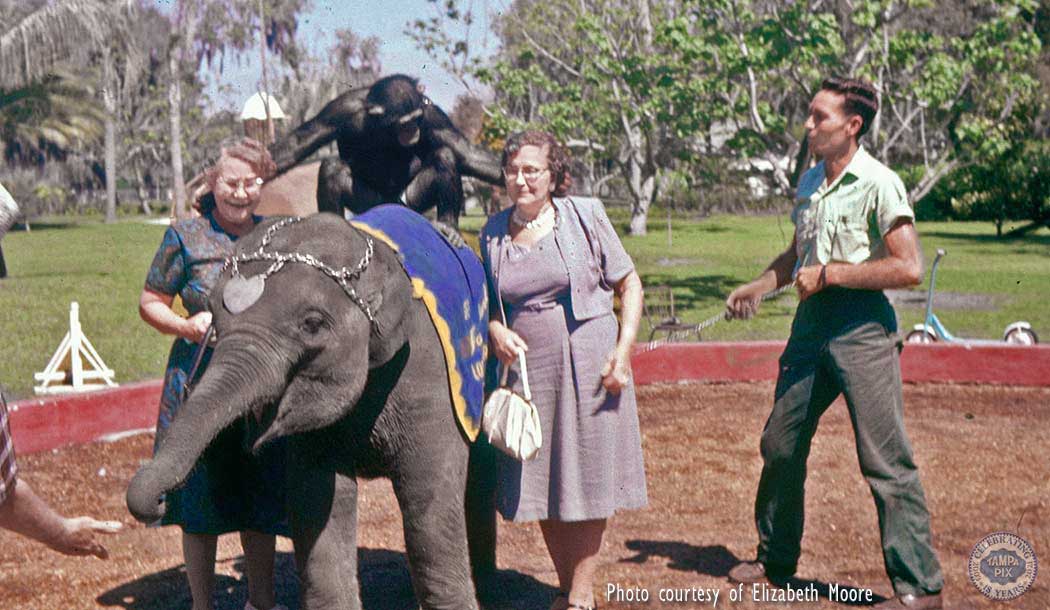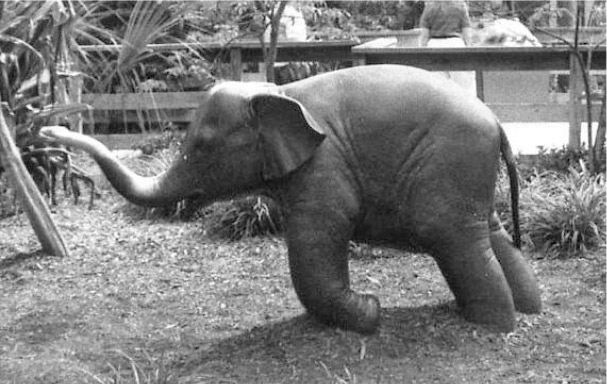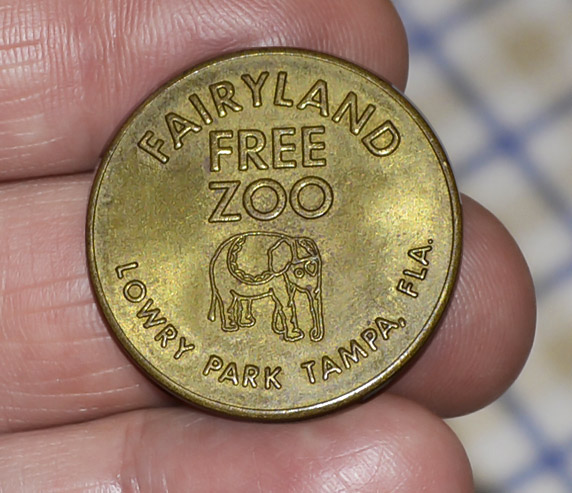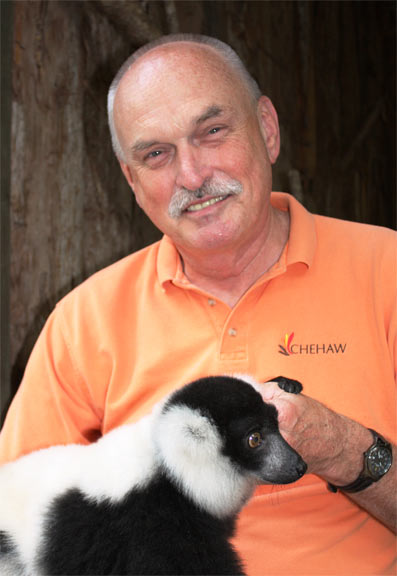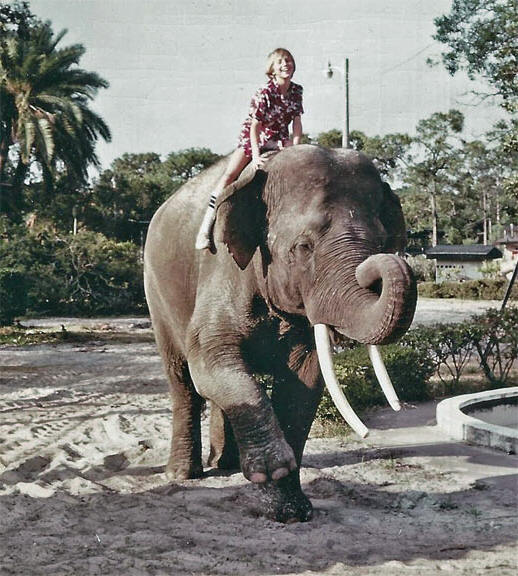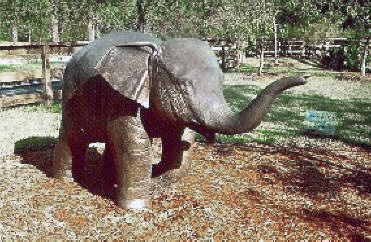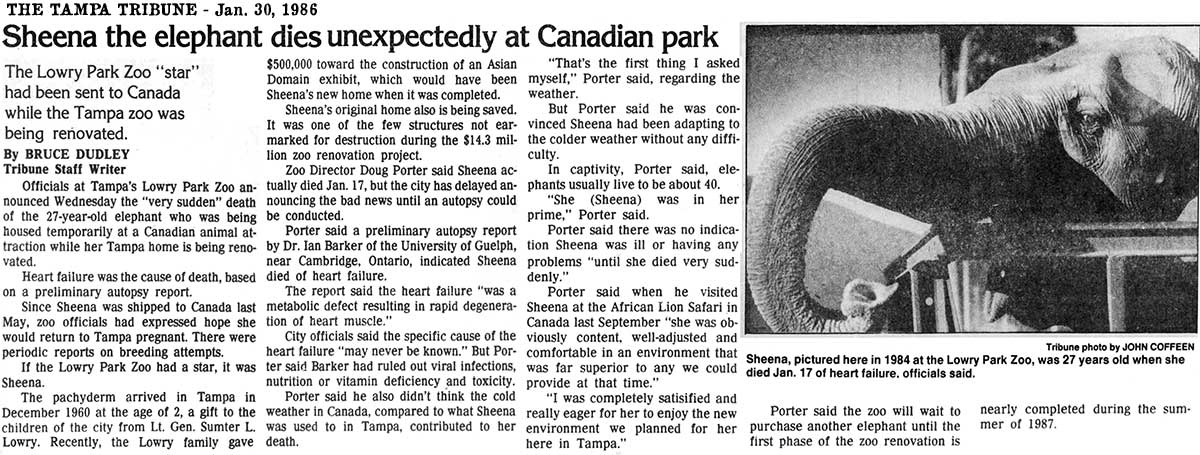|
|
|||||||||||||||||||||||
|
SO
THE STORY GOES: One day in 1960, a man approached Gen. Sumter Lowry (Jr.) and asked him to buy an elephant. Lowry asked "Why should I?" The man said "because the children of Tampa have never seen one." Lowry agreed to buy it, but only on the condition it could be here by Christmas. He asked, "Where is this elephant?" "Well, India." was the reply. Sheena was the first elephant to fly in a jet. She was flown to Tampa from Burma (now Thailand.) This account of how Lowry came upon the opportunity to purchase the elephant, and the fact she flew in a jet, is repeated almost verbatim everywhere the circumstances of Sheena's acquisition are presented. The source is probably Gen. Lowry's own memoirs, some of which were read in Dec. 1985 when the Lowry family donated $500,000 for the construction of a new Asian domain which would house Sheena. The donation was made in celebration of the 25th anniversary of the arrival in Tampa of the baby elephant Sheena. A portion of the Dec. 11, 1985 article is shown at right. According to this article below, it appears that Lowry became aware that the City had an opportunity to obtain an elephant, but due to the wording it's not clear if the opportunity was made known to him by the seller, or to the city. Then, Lowry wrote Mayor Lane offering to donate the $3,000 to pay for it. His method of contact with the mayor seems as if the two were at a considerable distance from each other at the time. If anything, the article is clear that it was Lowry who made the offer to the City, by way of a letter to the mayor, to pay for the elephant after hearing that the City was being given a chance to buy one.
BELOW: In the article on the left, we learn that the elephant is in Thailand, not in India. She is an Indian elephant. "But the man negotiating the purchase told Neff later that...the animal probably could not be shipped out of there in time to arrive any earlier than New Year's." So if Lowry was the one approached with the opportunity to buy an elephant, he didn't participate any further than to offer to pay for it. It was the City through parks director Frank Neff who negotiated the purchase and made the arrangements. Sheena came to the U.S. over the Pacific Ocean, landing first in California, then from there to New Orleans to Miami to Tampa.
Dozens of children went home disappointed as planned ceremonies were cancelled due to a delay. It was reported that the plane had to turn around and return to Miami because the elephant was too heavy for the plane. Later, it was reported that a mechanical problem forced the plane's return to Miami. Lowry's grandson was to hand over the elephant to Mayor Lane marking the official delivery of Lowry's gift to the City. Her home was to be a concession stand vacated by the Sertoma Club who was operating the stand without contract and keeping all the proceeds.
Below, the author of the same article that featured Sally Lowry Baldwin's comments, here claims "hundreds" of local youngsters greeted the red- bow-adorned elephant at the airport. All indications are, that didn't happen.
Tampa Bay Magazine, Oct/Nov. 1986 at Google Books
Jim Godfrey also refers to Packy as a male.
There was no mention Shelia riding Sheena in the 1961 parade. In fact, the only mention of Shena (and not by name, but as "Fairyland elephant') was on a parade line-up in the news the day before the parade. The next year, a 1962 Gasparilla article mentions that the Fairyland elephant was old enough to walk in the parade this time, and a monkey rode on her (chimps are NOT monkeys) but the previous year (1961) she rode. So Shena was too young to walk the distance, let alone carry a rider, in the 1961 parade.
SHENA TO GET A "PACHYDORM"
SHEENA FINALLY GETS A HOME
Baby Sheena giving
Donna Ringer and Photo provided by Rick Ringer
Suzie played an important role in getting the elephant house for Sheena. She performed with Sheena in a circus ring at the park twice daily and three times on Sundays. Around 1963, after each performance, Susie would go into the crowd of spectators with a cup, collecting contributions for Sheena's new home. In a year, $4,000 was collected and by 1965, Sheena had a new home.
May 24, 1965 TBT archives photo
Above at right: Sheena performing for
park guests, along with her trainer James Godfrey, circa late 1960s.
Rex Gordon from eBay seller
Sheena and Suzie performing.
Grandma and her friend pose with Suzie and Sheena.
May 23, 1965
The acquisition of Sheena provided the impetus for expanding and diversifying the animal collection. By 1987 the zoo was the home of eight different species of animals, including two Florida black bears, two Bengal tigers, a Himalayan black bear, a chimpanzee, two spider monkeys and two otters. As the collection continued to grow, the need to upgrade the habitats and present the animals in natural settings became an issue fully embraced by the Tampa bay area community, which resulted in the formation of an organization dedicated to building a first-class zoological garden. Zoo History continued
Fairyland token
provided by Kimi Lau-Costanzo. |
|||||||||||||||||||||||
|
|
|
|
I have been doing some reminiscing (and some writing) about the early days at the Lowry Park Zoo. I love this photo of my son Jason and the story it tells, as he sits atop Buke – a massive male Asian elephant.
1985 - Jason Porter atop Buke, the male elephant
brought in to share Sheena's enclosure at Lowry Park to accompany
Sheena to Canada and make her transportation less traumatic. |
The
Lowry Park Zoo, at that time, had one 24 year old Asian elephant named
Sheena, who had been donated to the zoo in 1961 by the Park’s namesake**
General Sumter L. Lowry, Jr. The new master plan had been designed
around her and the building she inhabited, but in order to build her new
facilities, she would need to be moved to another zoo for a few years.
After searching far and wide, we found a good facility at
African Lion
Safari near Toronto Canada that would take her. They had proper
facilities, other elephants, and a highly competent staff. All we had to
do was figure out how to get her there. I described the process in my
article for the Zoo’s newsletter in the fall of 1985. **The park was named for Gen. Lowry's father, city commissioner Dr. Lowry, not Gen. Lowry. Though highly trained, Sheena had not been handled in over ten years. She had become quite unmanageable and even dangerous to those who worked around her. But after a few days with the experienced elephant handler, Charles Gray, she was performing all of her old tricks and even seemed to enjoy the change in routine and the companionship of her handler. The next problem was how to get her out of the enclosure. So complete was Sheena’s incarceration, that there was not even a gate into her enclosure. Our friendly workmen moved in with their cutting torches and bulldozers, and after nearly an hour of cutting the heavy iron rails, an opening was made in the pen. The next problem we faced was the uncertainty of Sheena’s reactions to her new-found freedom. Would she respond to her handler’s commands, or would she run away at the first opportunity? The moment of truth arrived. As Sheena walked out of her pen for the first time in nearly 15 years, it became obvious that she was happy to be outside and yet very responsive to her handler. She quickly gained his confidence, and was soon allowed to wander happily around and explore the zoo she had lived in for most of her life. The rest of her loading and transporting was so uneventful as to appear routine. But that was not the end of the story. In order to make transportation less traumatic, another elephant was brought from Canada to keep her company. A large male Asian elephant named “Buke” became the first elephant ever to share Sheena’s enclosure. Though she was coy to his advances at first and turned her back whenever he came close, she soon warmed up and remained close by his side as they explored the zoo grounds. Buke seemed gentle enough, responding to his handlers like an anxious child, as the two elephants wandered the property untethered. It never occurred to me, as I placed my son on his back and snapped a picture, that Buke might have a dark side. But the next time I saw him was at his home in Canada later that summer. He was in musth (a period when bull elephants are sexually active and very aggressive) and chained to a tree – ready to kill anyone who came too near. |
|
The Death of Sheena Sheena, the elephant queen of Tampa's Lowry Park Zoo, died of unexpected and unexplained heart failure on January 17, 1986. Sheena, age 27, had been shipped to Canada's African Lion Safari in May of 1985 while her Asian Domain quarters were being prepared. Officials had even hoped she would come home pregnant. According to zoo director Doug Porter, "She was in her prime." This bronze elephant is located at the entrance to the Asian domain within the Lowry Park Zoo, and is intended to serve as a memorial to Baby Sheena, who was donated to the zoo by Sumter L. Lowry, Jr. in December, 1960. Lowry intended Sheena to be a gift to the children of Tampa, who, in 1960, had not been exposed to elephants in a local setting. |
|
||
|
|
|||

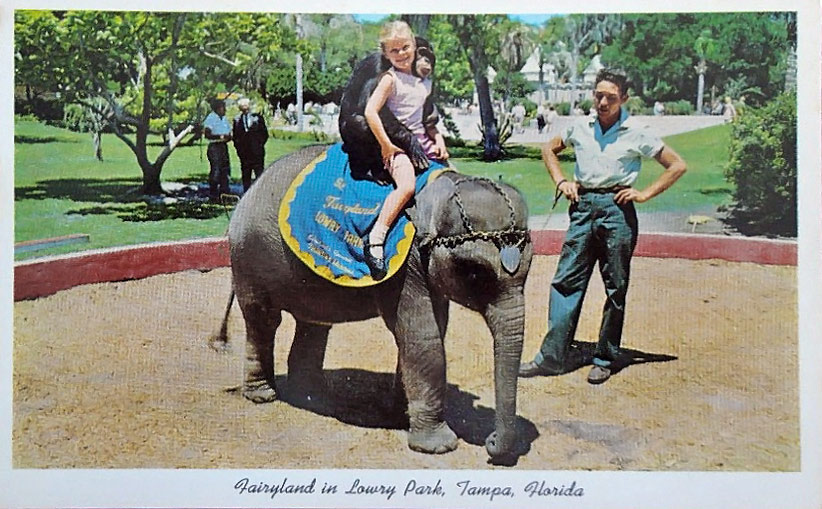

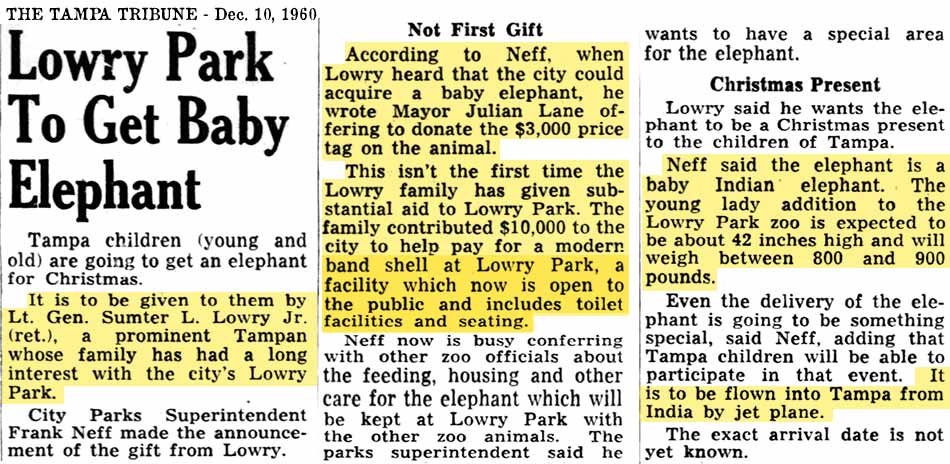
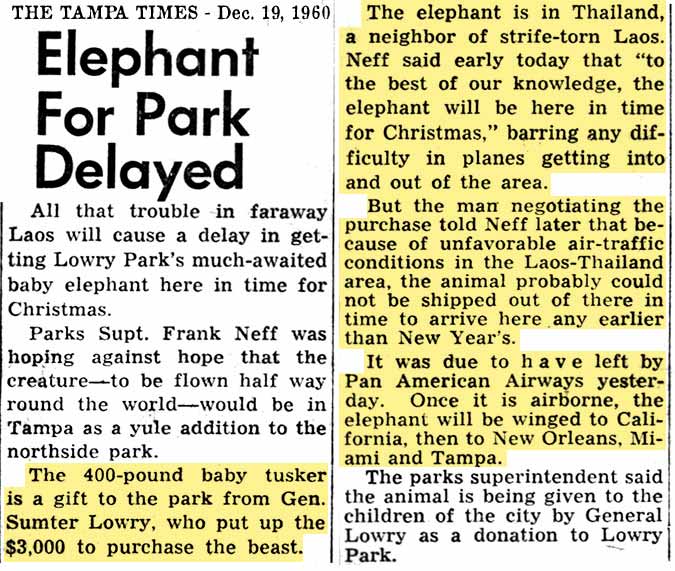
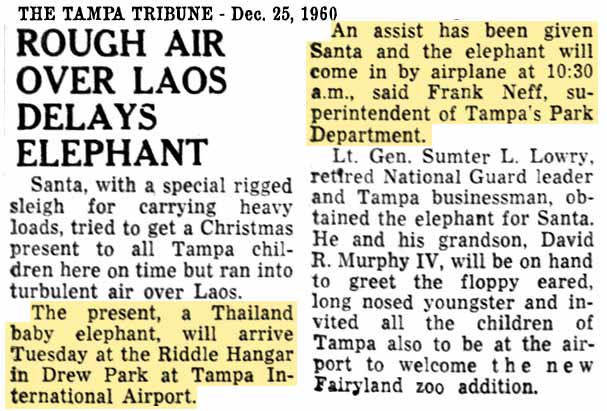
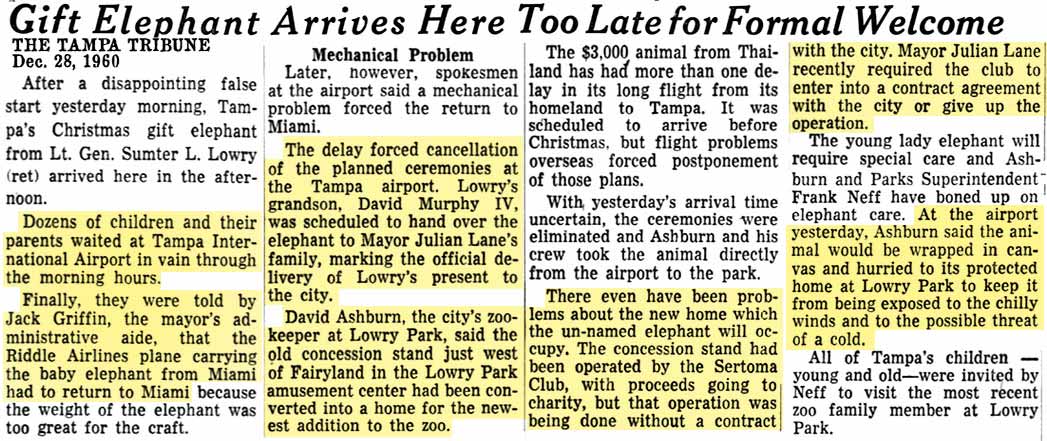
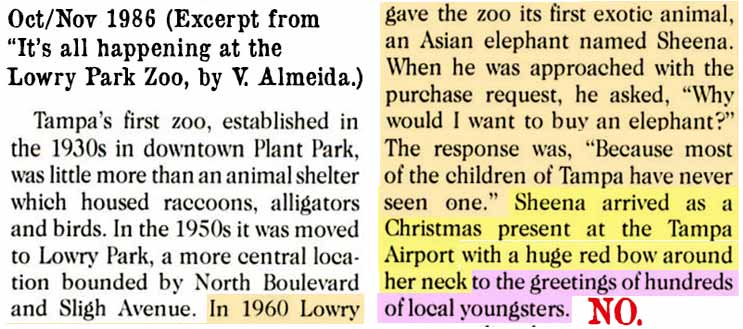
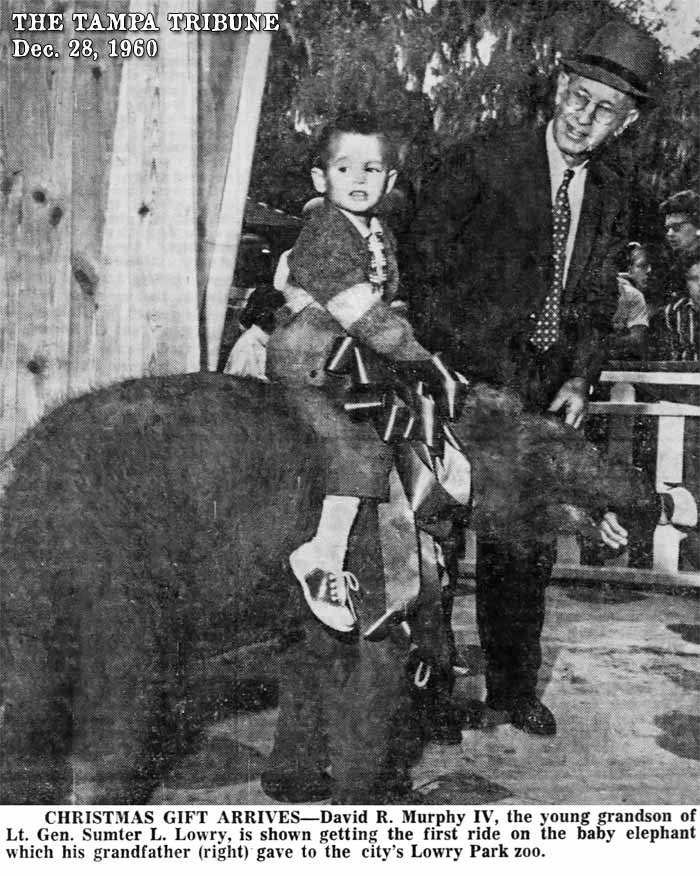
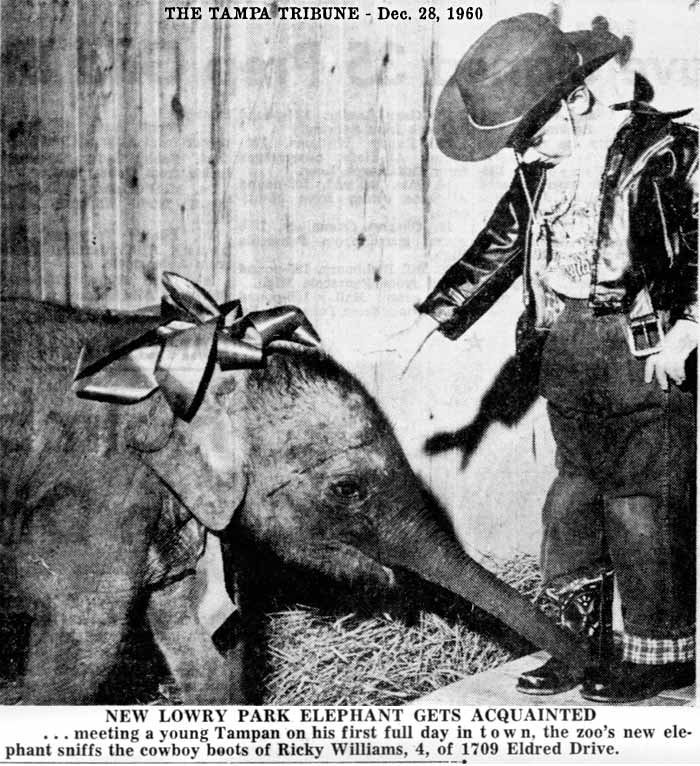
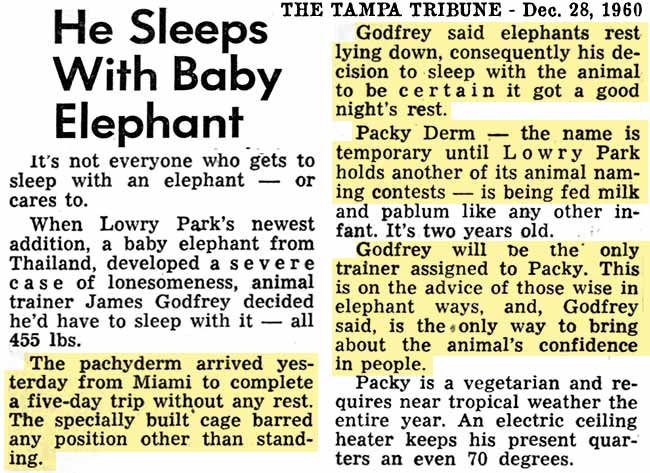
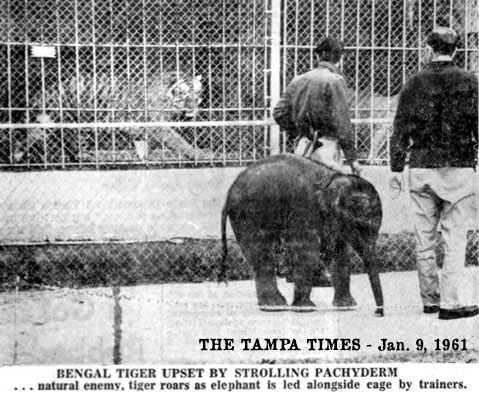
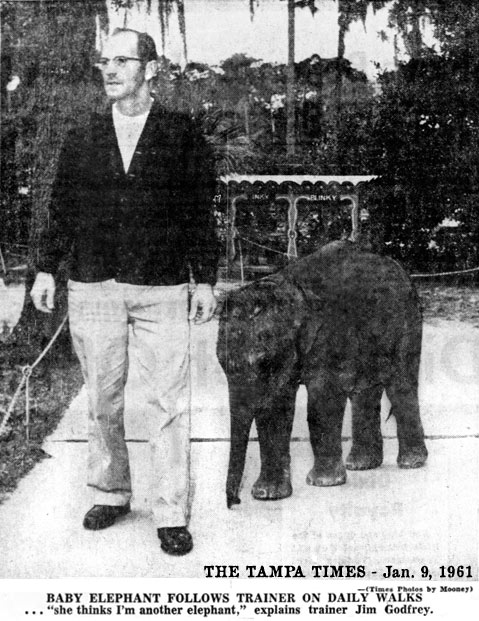
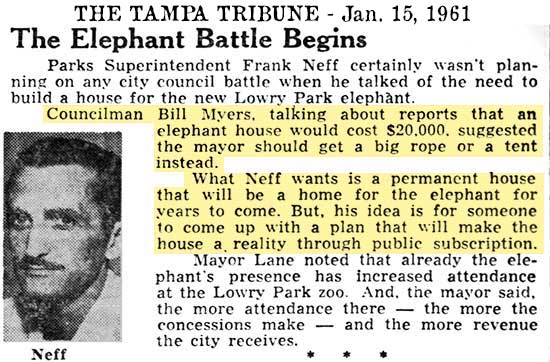
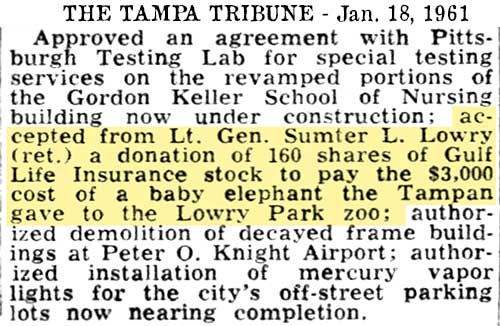
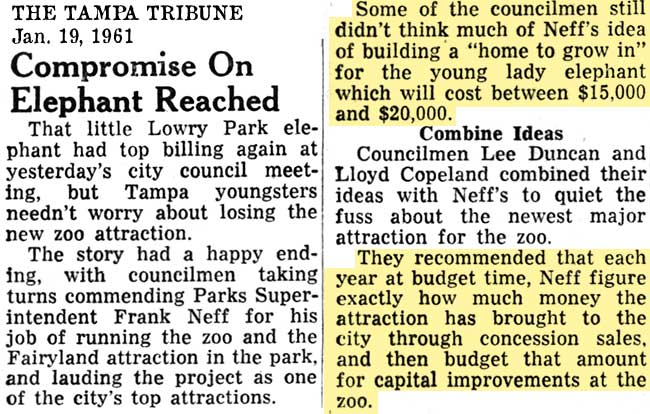
.jpg)
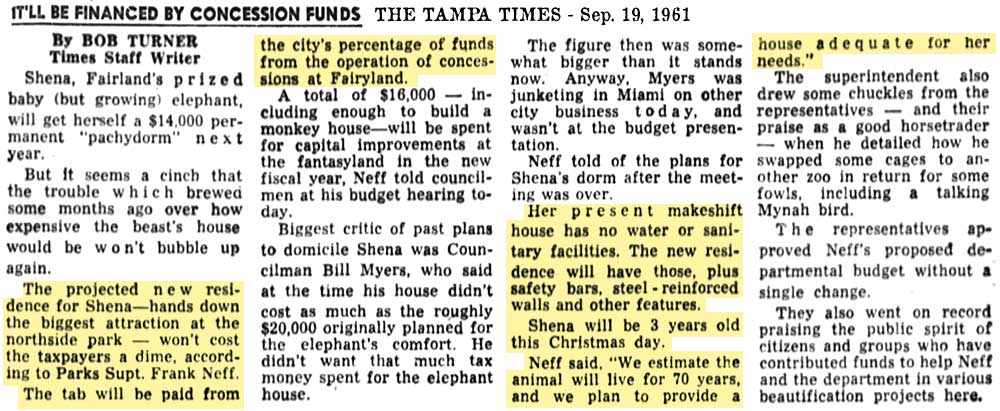
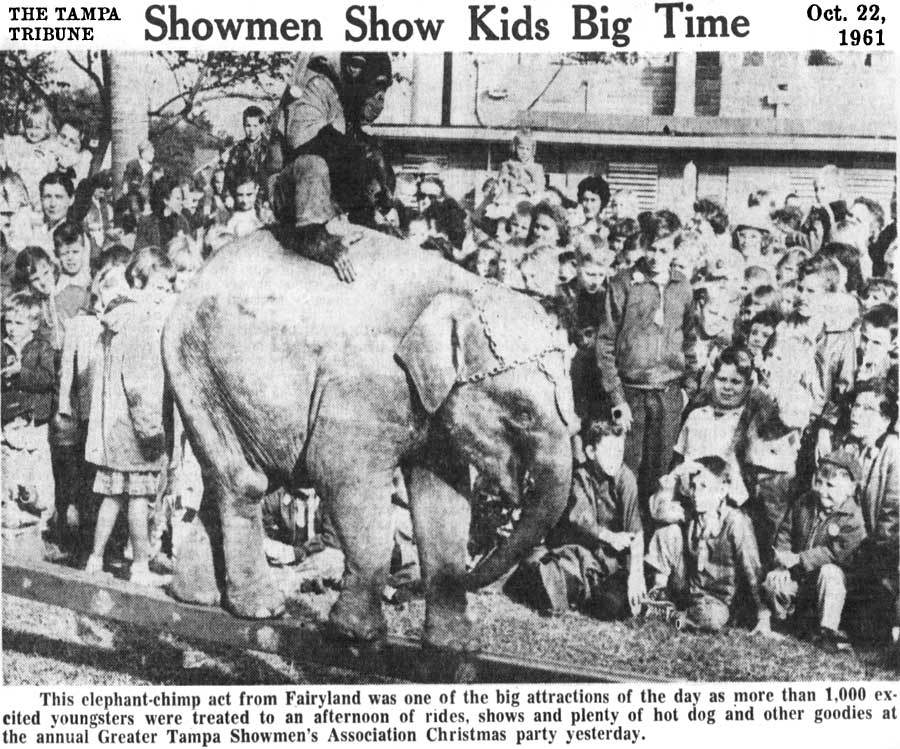
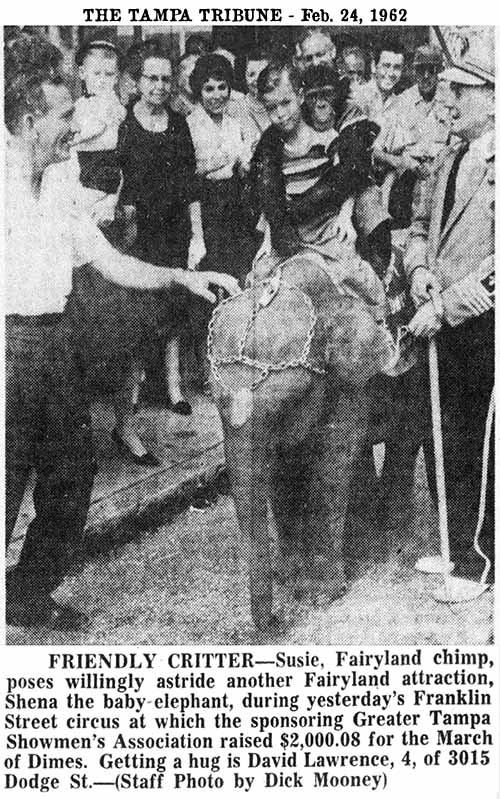
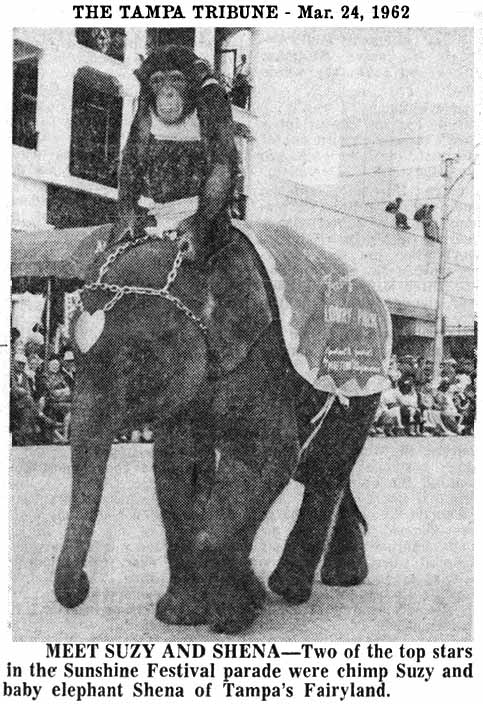
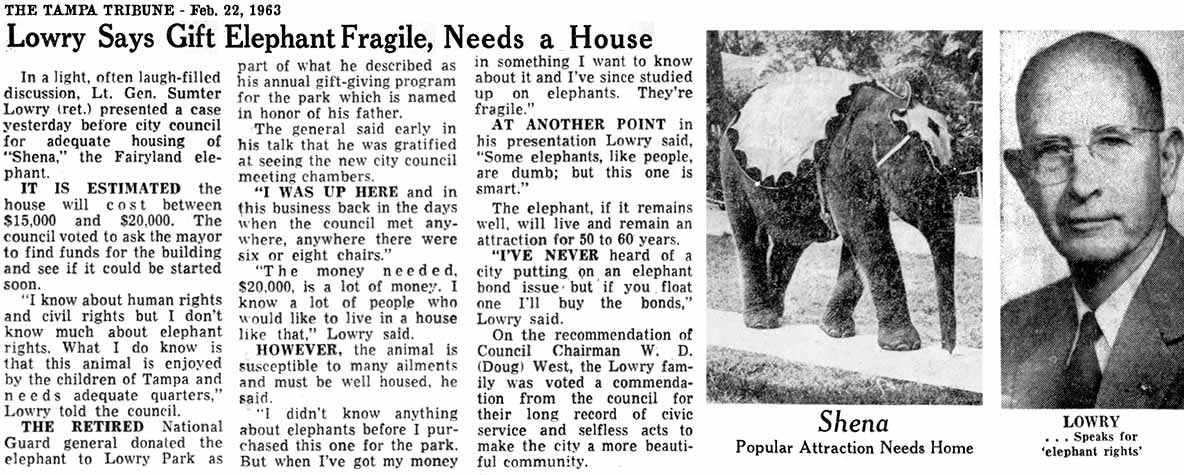

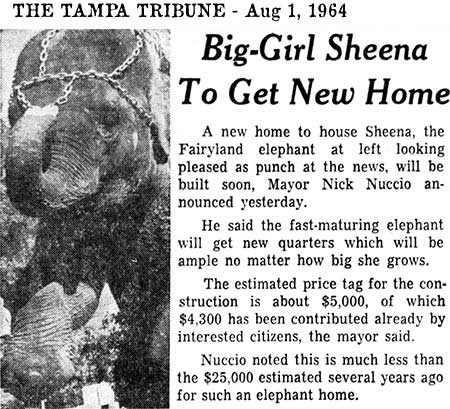
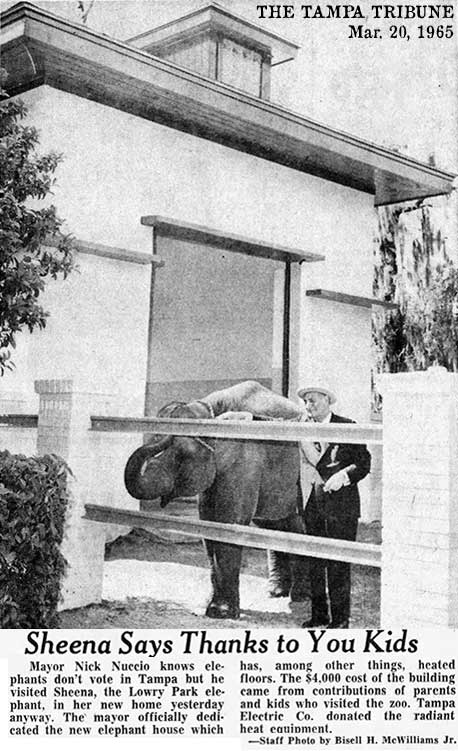
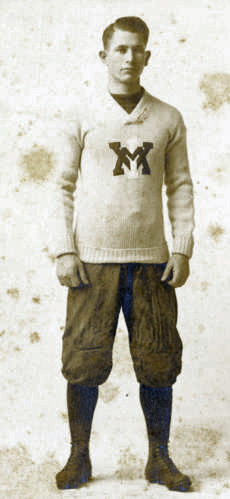 A
1914 graduate and veteran of two world wars, he set a pattern of
accomplishment and distinguished service during his cadet days at
Virginia Military Institute. He was
a Cadet Captain and Company Commander, a varsity letterman
in both football and basketball, president of the monogram club and
captain of the basketball team.
A
1914 graduate and veteran of two world wars, he set a pattern of
accomplishment and distinguished service during his cadet days at
Virginia Military Institute. He was
a Cadet Captain and Company Commander, a varsity letterman
in both football and basketball, president of the monogram club and
captain of the basketball team.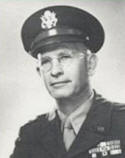 He
was a long time member of the Florida National Guard and took part in
that organization's service on the Mexican border in 1916, followed by
service in Europe for the First World War, and in the Pacific for the
Second World War as a brigadier general in the Army's 31st
Division in the Pacific.
He
was a long time member of the Florida National Guard and took part in
that organization's service on the Mexican border in 1916, followed by
service in Europe for the First World War, and in the Pacific for the
Second World War as a brigadier general in the Army's 31st
Division in the Pacific. 